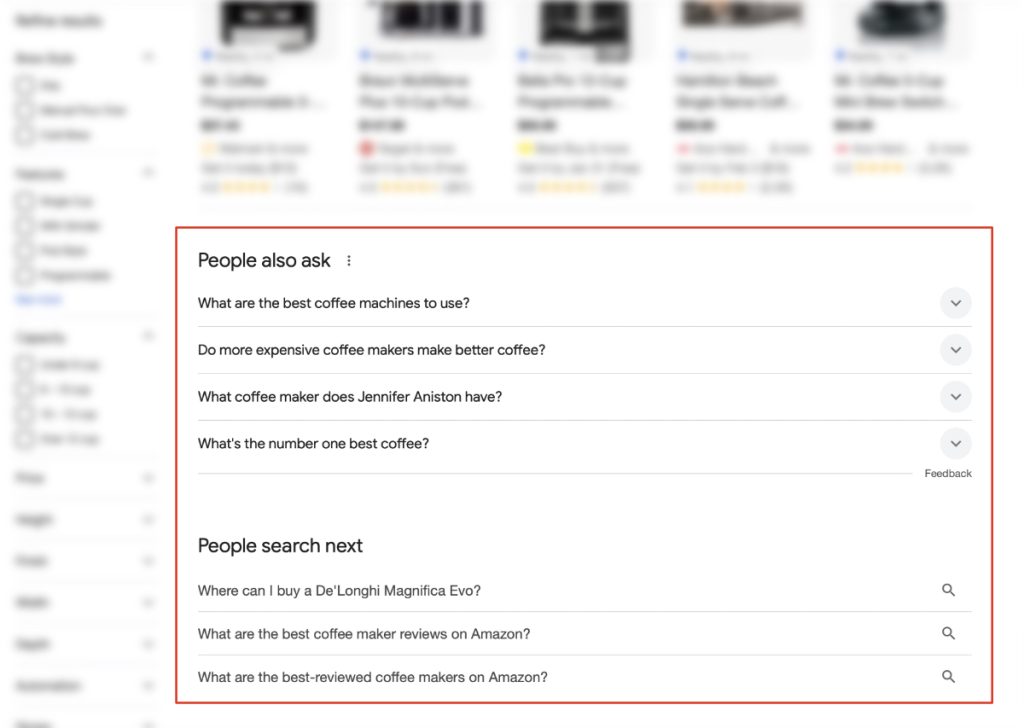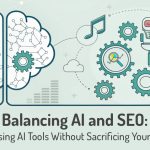
The digital marketing landscape is undergoing a fundamental transformation.
While businesses have spent years mastering Search Engine Optimization (SEO), a new player has entered the field: Answer Engine Optimization, or AEO. This evolution doesn’t just introduce another marketing buzzword – it represents a significant shift in how people find and consume information online.
Users aren’t just typing keywords into search bars anymore. Instead, they’re asking questions, seeking meaningful answers, and relying increasingly on voice search and AI assistants to find information. This shift in user behavior demands a new approach to content optimization.
What is Answer Engine Optimization?
Answer Engine Optimization (AEO) is a strategic approach to content creation that optimizes digital content specifically for AI-powered search engines and voice assistants. While traditional SEO focuses on keyword rankings, AEO structures content to directly answer user queries in a natural, conversational format that both AI systems and humans can easily understand.
Key Differences Between SEO and AEO:
- SEO targets keywords; AEO targets questions
- SEO optimizes for text search; AEO optimizes for voice and AI
- SEO focuses on rankings; AEO focuses on featured snippets
- SEO drives website traffic; AEO prioritizes direct answers
- SEO uses technical optimization; AEO emphasizes natural language
According to recent studies from Kommando Tech, more than 70% of Google Assistant queries are expressed in natural language. Additionally, High Level Marketing reports that voice searches are expected to comprise 50% of all searches by the end of this year. This shift in user behavior demands a new approach to content optimization and digital marketing strategy.
Think of it this way: If SEO is about getting your content to the top of search results, AEO is about getting your content to be the answer when someone asks a question. Whether that question comes through a voice assistant, a chatbot, or a traditional search engine, AEO helps ensure your content provides the most helpful response.
The Power of SEO and AEO Together
Some marketers view AEO as a replacement for SEO, but this perspective misses the bigger picture. These approaches aren’t competitors—they’re partners in a comprehensive digital strategy. While implementation success varies by industry, combining SEO and AEO strategies can, for most businesses, lead to significantly higher engagement rates, more traffic, and better visibility than those focusing on just one approach.
Here’s why this dual approach makes sense:
- SEO ensures your content is technically sound and discoverable
- AEO helps that same content appear in enhanced search features
- SEO drives sustained organic traffic over time
- AEO captures immediate-answer seekers and voice-search users
- SEO builds domain authority through quality signals
- AEO enhances user experience by providing direct answers
The importance of this dual approach has become even more evident since Google’s Search Generative Experience (SGE) began impacting organic traffic in early 2024. With AI-generated answers appearing at the top of search results, many websites have seen decreases in their organic traffic. This shift in search makes it important to optimize not just for traditional search but also for AI systems that power these direct answers.
Understanding the New Search Landscape
The way people search for information has evolved precipitously over the past few years. According to Invoca, by the end of 2024, voice search usage was expected to increase by 100% compared to 2020. This isn’t just about convenience – it reflects a profound shift in how people expect to interact with technology and find information.
Traditional search engines are adapting to these changes, too. Google’s BERT update in 2019 shows (along with similar algorithmic changes since) that search engines are becoming increasingly sophisticated in understanding natural language and context. This means that old-school keyword optimization just isn’t enough anymore.
The Rise of Google Gemini
Speaking of Google, the search giant’s introduction of Gemini-generated responses to most search engine results pages (SERP) marks another important shift in how people access and consume information. As an AI model designed to work across text, voice, and multimodal interactions, Gemini is fundamentally changing how Google processes and responds to queries. This is particularly relevant for voice searches, where Gemini can provide more nuanced, contextual responses than traditional search results.
For businesses, this means optimization strategies need to consider how Gemini processes and prioritizes information. While traditional SEO principles remain important, content now needs to be:
- More conversational and natural in tone
- Structured to provide clear, direct answers
- Capable of addressing follow-up questions
- Rich in context and supporting details
- Factually accurate and authoritative
Gemini’s ability to understand and process complex queries means that content creators need to think beyond simple keyword optimization. The focus should be on creating comprehensive, authoritative content that directly addresses user needs while providing enough context for AI systems to understand and accurately represent the information.
The Core Principles of Modern Content Optimization
Creating content that performs well for both traditional search and AI-powered platforms requires a strategic approach. Here’s how to make it work:
Start with User Intent
Before writing a single word, understand what your users are really asking. Our content marketing consulting team recommends analyzing search intent through multiple lenses.
Let’s use the example of “best coffee maker” to illustrate how to address multiple user intents:
Comparative Information Needs:
- Detailed brand comparisons
- Brewing method analysis
- Price range considerations
Technical Information Needs:
- Maintenance requirements
- Capacity specifications
- Feature explanations
Practical Information Needs:
- Usage tips
- Cleaning instructions
- Troubleshooting guides
Structure for Clarity
Modern content needs to serve two masters: human readers and AI systems. This doesn’t mean writing separately for each; instead, it means creating content that flows naturally while maintaining a clear structure. For example:
❌ Instead of writing: “Coffee makers come in different types: drip coffee makers, espresso machines, French presses, and more.”
✅ Write: “Coffee makers come in several distinct categories, each offering unique benefits for different brewing preferences. Drip coffee makers excel at producing large quantities of consistent coffee, while espresso machines deliver concentrated shots perfect for specialty drinks. French presses, on the other hand, offer full control over the brewing process and highlight the coffee’s natural oils and flavors.”
(Can you tell we love coffee here at Headline Consultants?)
Implement Technical Optimization
While natural, human-sounding writing should always be the priority, technical optimization remains important. Schema markup, proper HTML structure, and clean code help search engines and AI systems better understand your content. Working with our website copywriting team, you’ll want to implement these key technical elements for successful AEO implementation:
Schema Markup Integration
- FAQ Schema for question-based content
- How-to Schema for instructional content
- Article Schema for news and blog content
HTML Structure Optimization
- Clear heading hierarchy (H1 → H6)
- Proper list formatting
- Descriptive alt text for images
Content Organization
- Question-based headings
- Featured snippet optimization
- Clear answer blocks
Practical Implementation Strategies
Let’s move from theory to practice. Here’s how to implement these principles in your content:
Content Planning
Start by understanding the questions your audience is asking. Use tools like AnswerThePublic and Google’s “People Also Ask” boxes to identify common questions in your niche. Then, create content clusters that address both broad topics and specific questions within those topics.

For example, if you’re creating content about coffee makers (might as well, right?), it would make sense to structure it like this:
Main Topic: Coffee Makers
- Comprehensive buying guide
- Individual brewing method comparisons
- Maintenance and cleaning guides
- Troubleshooting common problems
- Specialty drink preparation
Content Creation
When creating content, focus on clarity without sacrificing depth. Each piece should:
- Begin with a clear, direct answer to the main question
- Provide supporting details and context
- Include relevant examples and practical applications
- Address related questions naturally within the content
- Maintain a conversational but professional tone
Ongoing Optimization
Content optimization isn’t a one-time task. Since the beginning of the Google algorithm, it has been true that regularly updated content performs significantly better in traditional search results. The same now holds true for AI-powered results as well.
To that end, make it part of your content marketing process to establish a regular review schedule. A schedule will help to:
- Regularly update information for accuracy
- Add new, relevant details
- Refine based on user feedback
- Adjust to new search patterns
- Incorporate emerging questions and topics
Measuring Success: Key Metrics to Track
To effectively monitor your optimization efforts, track these key performance indicators:
1. SERP Features Performance
- Featured snippet appearances
- “People Also Ask” box inclusion
- Knowledge panel presence
- Rich results display
2. User Engagement Metrics
- Time on page
- Bounce rate
- Pages per session
- Return visitor rate
3. Voice Search Performance
- Voice query rankings
- Direct answer selections
- Featured snippet voice reads
These metrics, available through Google Analytics, help indicate whether your content truly answers user questions effectively.
Looking to the Future
As we progress through 2025, successful digital marketing will require a balanced approach to both SEO and AEO. The businesses that thrive won’t be those that adapt their content for algorithms; it’ll be those that never lose sight of the humans behind every search.
Our comprehensive content marketing services can help you:
- Develop a balanced SEO and AEO strategy
- Create AI-friendly content structures
- Implement technical best practices
- Monitor and adjust performance
- Stay ahead of emerging trends
Ready to Optimize Your Content for the Future?
Don’t wait to evolve your content strategy. At Headline Consultants, we specialize in creating content that performs well in both traditional search results and AI-powered platforms.
Want to learn more about implementing AEO strategies for your business? Contact our team today for a consultation, or explore our content audit services to see how your current content can be optimized for the future of search.




